#Te Rapunga
Text
Redefine and Idea Remix
20th August (Sun)
Description
So, through Jam Session and ideation, I found that creating a perfect toolkit for ALL CONSUMERS in Aotearoa is challenging for me in this project research limitation and time limitation. So, I decided to redefine my project's limitations and how can I narrow the project's purpose.
Difficulties that I faced from the ideation stage
Age-range
Cultural difficulty
Food product diversity
I reorientated the project around the three main challenges. As a result, the target market for the newly defined project is intermediate to college New Zealand students. The food will be based on the categories of 'Countdown' and 'New World', which are local markets in New Zealand,
Based on the redefined project, I conducted an 'Idea Remix activity', where I mixed and matched the initial ideas selected during the previous ideation process to come up with ideas that could be developed.

-> From the Miro board, the Idea Remix activity
Due to the change in direction of the project, I created an inspirational mood board to explore my own design style and goals while researching the package design, which was a major influence on the project prototype.

-> From the Miro board, Inspiration mood board. All the image links are provided on the Miro board.(1)
Feelings
While working on the Redefine project, I realised I was working on an extensive one. At first, it took a lot of work to think that I had to redetermine and research information about the project. However, because I had previously researched various aspects of the project, the process of redefining the project details was not complicated, and it was good because it gave me a chance to reflect on the project again.
Evaluation
Project process 3/5 - I've gotten a bit behind in the process of revisiting the project, but it's not too late yet. I believe this will lead to a project with a solid foundation.
Time management 3/5 - I didn't work on it for a while because I thought I needed to redefine the project, so I had to do all the work on the weekend.
Project result 5/5 - Now that the project brief and the target market are clearer, I'm looking forward to developing the prototype.
Analysis
I had to redefine my project because I was thinking too broadly about the goals of my project from the beginning. Most of the projects I've worked on as a designer have been aimed at a specific community or a definite audience, which I realised during the redefinition process helped me to create a definite design style as I went through the process.
Conversely, the redefine process was easier for me because I had done extensive research when I was doing the background research for my previous projects. This wide-ranging research allowed me to determine what my project needed most right now, allowing me to make the best choices.
Conclusion
As I went through the redefine for the first time, I learnt that redefining and recapitulation are important in addition to periodic reflection. reflection mostly reflects and investigates a part of the project or a specific element of the project, so I don't think about the whole project comparatively. Therefore, it is necessary to doubt and reflect on one's project at least 2 times, depending on the progress of the project.
It is necessary to have the ability to doubt and reflect on your own project. Of course, I should have faith in my own project, but sometimes, I need to further develop the ability to reflect, which is to judge my own project from a third party's point of view in a sober manner. And I currently have a lack of reflection, so I want to develop it.
Action Plan
This made me realise the importance of reflection, especially the need for periodic reflection on the project as a whole. I think I better understand the process of clarifying a project before development by doing define after the discover phase in the Double diamond process model, the most basic process model of design.

-> Developed by the Design Council, Double Diamond is a design thinking process. (2)
However, in comparison, the Hautū Waka framework I use encourages me to spend the majority of the project in the Te Whiwhinga phase after researching and exploring the Te Whāinga phase. I believe it is essential to reflect on the project as a whole at the same time as researching in the Te Whāinga phase, and when I undertake my next project, I will reflect on this project and include redefining and recapitulating activities in the project process.

-> Hautū Waka framework from Auckland Co-design Lab. (3)
Next Plan
In Week 6, I will begin developing the idea - building on my ideas, hoping for better ideas, and creating something closer to the final.
I will start branding the project before starting the final design for the toolkit.
Reference
(1) Image Link provided in the image
(2) Redspark. (2022). Double Diamond: o que é e como usar?. Redspark. https://www.redspark.io/double-diamond-o-que-e-e-como-usar/
(3) The Lab Team. (2022). Practice Foundations: Hautū Waka. The Auckland Co-design Lab. https://www.aucklandco-lab.nz/resources-summary/hautu-waka
0 notes
Text
Blog no.7 07/08/23
Te Rapunga phase guiding questions (from Auckland Co-Design Lab)
What supports us to spot tohu?
My positionality, which I want to continue to reflect on will heavily impact what tohu I notice in the research. This is not necessarily a bad thing, as my project should be aligned with my interests in order to be motivated and feel pride in my work. However, the tohu I miss because of lack of personal connection could mean I miss a more fruitful path towards a better outcome.
When researching, capturing quotes that stand out to me and saving them to reflect on later is a good way to make sure I'm actively engaging with the research. As a visual person, I feel that making mood boards and analysing precedents in that way, could enable me to spot more tohu than just reading texts.
Although I can't offically talk to outside stakeholders, I want to keep touching base with people in the trans community to make sure my approach and tohu are reflective of their lived experience.
What are the capabilities, mindsets, processes, that support us to spot emerging tohu?


0 notes
Text
Week 10 BLOG
My focus was to get input from the stream leader regarding my approach to my design, especially the prototype, considering the time limit and capacity within the next couple of weeks. I previously wanted to show a mock performance. Still, knowing the ethics regarding bringing performers and the structure of the redesign showcase, my options were highly limiting, even with negotiations with teaching staff. Hence, my approach would be to create two prototypes:
“Lead up to the performative art and telanoa.” This phase is demonstrated as a low-fidelity prototype, rough advertisement, or hand-drawn poster.
“After performative art and telanoa resources and take away.” This phase is demonstrated as a high-fidelity design, a functional website using Wix (shown in fig 1).
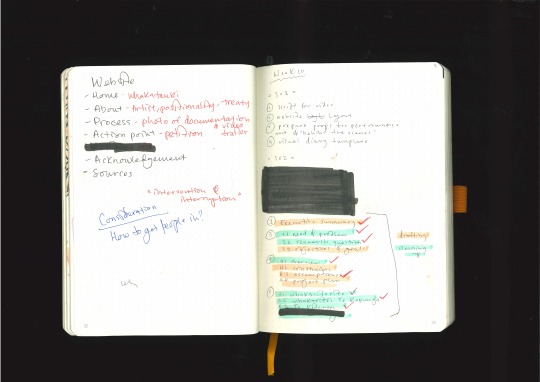

Fig 1. plans for DES301 and DES302
These are possible and something that I can execute. However, the discussion with my store leader left me in a doubtful spot (potentially returning to the Te Rapunga phase); my doubt came from her unsure of my current approach and vision. The question in our discussion was whether I was no longer doing performative art. This had me contemplating to the point where I questioned changing my whole project, which is challenging at this stage. Nonetheless, I am demotivated and hopeless.
I found a saying that might put back that spark I have lost:
“E tu te huru ma, haramai e noho. Etu te huru pango, hanatu e haere. Let the white hair remain here, let the black hair get up and go [We must follow our dreams] (Elder, 2020).”
Reference
Elder, H. (2020). Aroha. Penguin.
0 notes
Text
Idea Exploration
18th August (Fri)
Description
In Week 5, I started organising my ideas in earnest. The goal of Week 5 was to identify and evaluate ideas to use as components of my prototype toolkit and to determine the best ideas to include in the toolkit.
Firstly, I used brainstorming to generate a range of toolkit ideas, which were divided into three main categories: literature, physical and digital. Firstly, literature is something that users can read to learn about food safety and how to use the toolkit. Next, physical is how users can learn and practice food safety through hands-on use. Finally, digital is how users can be directed to a website or application through a link or QR code in the toolkit. My idea was to include as many physical ways as possible in the toolkit so that users could learn about food safety while having fun and experiencing it firsthand.
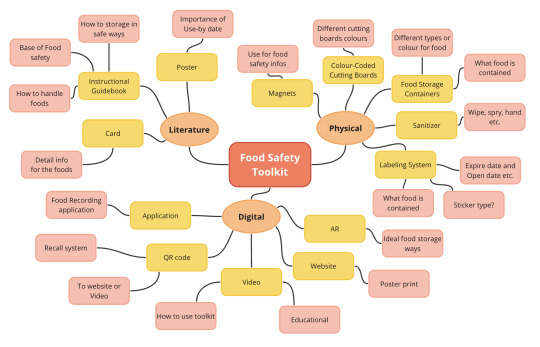
-> From the Miro board, Brainstorming ideas
After organising many ideas, I chose the ones that were suitable for the toolkit and evaluated them for 'Possibility' and 'Creativity'. Possibility is the likelihood that an idea can be made into a working prototype. It is an evaluation criterion that takes into account time, materials, and realisation, and I chose it as an evaluation criterion to select the most promising ideas for a project that needs to be completed within a limited time. Another evaluation criterion, creativity, was selected by my project values and the values of my project partners. One of my project partner's values, Whai māramatanga, means 'We always look for a better way' (1) and one of my project values, Ngā akoranga, means learning (2). I chose 'creativity' as my evaluation criterion because it was the best option for this project and I wanted to make up new ideas, so I wanted to develop the ideas that already existed as much as possible, and also conceive of ideas that didn't exist.

-> From the Miro board, the Idea evaluation chart
Once I had an idea for the toolkit items, I started to think about how I wanted to package the toolkit. The current idea is to create a reusable bag similar to what users are most familiar with when it comes to food delivery.

-> Digital sketch of initial idea prototype 2D and 3D sketch
Feelings
When I started ideating, the project was getting difficult. I thought I had a lot of ideas, but when I tried to consider different situations and conditions, I couldn't come up with a clear idea, which was very difficult and exhausting.
However, when I see each idea developing and becoming clearer, I am hopeful that the project is moving in the direction I want it to go.
In fact, I'm starting to feel a little burned out from constantly pushing the project to the timeline, so I'm planning on using Week 6 as a light break to get back into the swing of things after this week's ideation.
Evaluation
Project process 4/5 - I'm feeling unsure and anxious about how the project is going at the moment, so I will create a more detailed timeline for the next week 6 and the holiday.
Time management 5/5 - I'm respecting and following the timeline.
Project result 3/5 - I'm not terribly satisfied because I didn't get the creative idea I was hoping for, but I can see the results of my efforts, and the project is moving forward.
Analysis
The idea generation was relatively quick, which was possible because I had a clear vision and aim for the project. because I was clear about what I wanted to achieve, I could brainstorm a toolkit with physical products, which led to many different ideas.
However, I still haven't arrived at the idea that I definitely want, and I think that most of the current ideas are advancements of the products and toolkits that already exist. However, I want my ideas to be creative and I want my PHYSICAL ideas to be fun and enjoyable for the users. Therefore, I will not limit my ideas, but will continue to add to them, and I will conduct research in other directions that are not connected to the ideas that currently exist.
I also realise that my ideas cannot cover all users. It was not easy to create a prototype that would be inclusive and understandable to all users of all ages, genders, races, etc. Therefore, my next step will be to redefine the project and create a clear direction.
Conclusion
Ideation is a time-consuming and research-intensive process, and it can also be physically demanding, which is why it's important to allocate a lot of time to ideation and to research more broadly in relevant areas so that you can come up with new and fresh ideas based on a wide range of information.
Action Plan
I had a relatively smooth start to my project ideation, but if I were to do it again, I would start by redefining the project's purpose.
Next Plan
Redefine the purpose of the project.
Idea remix
Reference
(1) Plant and Food Research. (2023). Our strategy. Plant and Food Research. https://www.plantandfood.com/en-nz/our-strategy
(2) John C Moorfield. (2023). Te Aka Māori Dictionary. Te Aka Māori Dictionary. https://maoridictionary.co.nz/
0 notes
Text
DES302 Presentation Reflection
23rd August (Wed)
Description
This past Monday, I gave a Project Proposal Presentation to my Design 302 class. The purpose of the presentation was to present an updated project proposal for the project we were working on in Design 301. The goal of the presentation was to succinctly communicate the background, problem, and visions of the project and present the project's current progress in a short amount of time. I prepared 7 slides, including a cover and closing page, and a pre-written script of about 5 minutes.
I created my presentation using Canva, using the exact same design as my week 4 presentation for Design 301, but I made sure to include all of the information in 5 slides, so I wrote down the main bullet points and replaced writing with the images.
The presentation went as planned, lasting about 5 minutes, and I was able to verbally explain everything I had written down in the script.
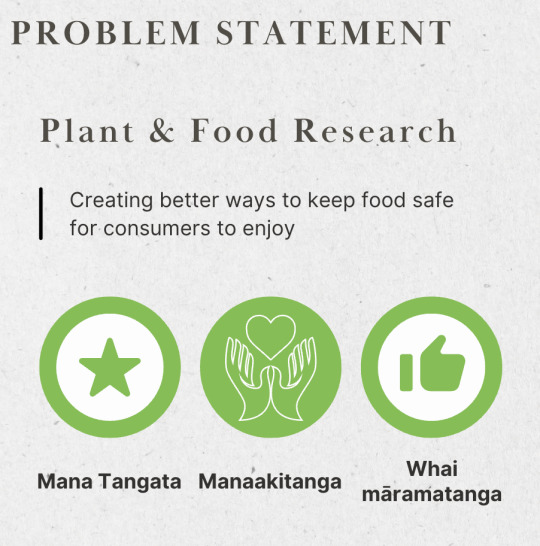
-> Captures of the second page of presentation slides: I used icons and short words for brief descriptions.
And today, I got my grade and comments on my presentation.
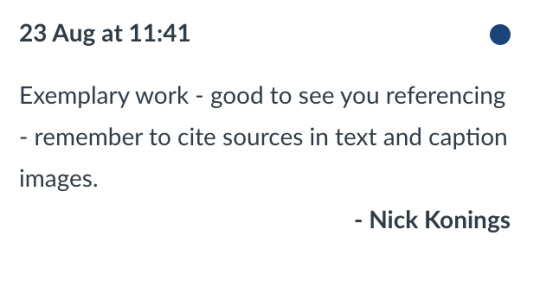
-> (1) The comment from tutor Nick. Thank you for the comment.
Through the comments, I realised I had forgotten to attribute the text and images used on each slide as I created them. As a third-year design student, I was embarrassed at myself for forgetting to reference, but this has made me realise that I will never leave out references in my final project presentation.
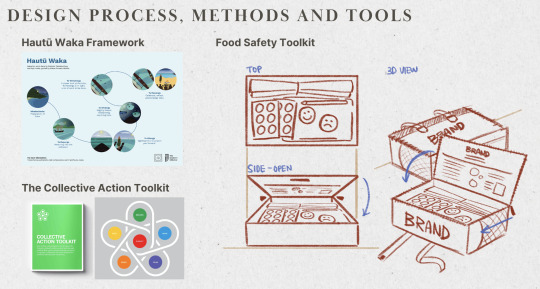
-> There needed to be more in-slide referencing for the photos used.
Feelings
I was very nervous when I gave the presentation, and there were a lot of changes from my previous proposal report as I worked on the project. There were a lot of changes from my Design 301 presentation in week 4 as well, but I had very little time to familiarise myself with the new presentation information and project.
However, I did a good job with my presentation because I wrote down my script in advance and spent a lot of time trying to familiarise myself with it as much as possible. After my presentation, I felt very proud of myself because I did my presentation without looking at the script as much, but on the other hand, if I had more time, I wish I could have given a smooth presentation without the script.
In particular, I used a lot of Māori in my project and presentation, so I was careful to pronounce the words correctly and supplemented my English explanations to ensure that everyone in the audience understood. I hope that through my presentation, other students will become more familiar with the Māori language and feel a connection to New Zealand and Māori culture when defining their positionality as UOA students.
Evaluation
Project process 5/5 - I recorded all my previous talks, scripts, slides, and other materials I used on my Miro board. This saved me a lot of time when preparing for this presentation, and I was able to improve on my previous presentation.
Time management 5/5 - I prepared my presentation in the allotted time allotted and am happy with the progress of my current project.
Project result 4/5 - It's a shame that I lost points for referencing, but I'm sure this will help me to improve my presentation slides for the final presentation.
Analysis
I think this presentation was more concise than the previous one, but I got high marks because I prepared clear explanations and evidence. I presented the possibilities of my project to the best of my ability within the time limit, and because I prepared as much as I could, I made eye contact with the audience and kept their attention. As such, the most important thing in a presentation is concise delivery and making the audience interested.
However, my main criticism of my presentation was my pronunciation. As English and Māori are my second languages, it took me a lot of time and effort to achieve a natural and authentic pronunciation, but I was still disappointed that I made some pronunciation mistakes during my presentation. In order to make my presentation more natural and professional, in my next presentation, I will practice more by extending the duration of the presentation and substituting other words to explain when I have difficulty in pronunciation.
Conclusion
Through this presentation, I was able to learn some essential tips for my final project, especially what I am weak in when giving a presentation. As English is my second language, I think I need to put more effort into my speaking and pronunciation, and I need to develop to be able to make eye contact and present professionally without being nervous in front of a large audience.
I am also glad that I was able to re-learn the important fact that I should cite sources in my texts and images through my tutor's comments.
Action Plan
If I were to give this presentation again, I would reference my text and images, I would use less writing and make my slides easier to read by using more images and icons.
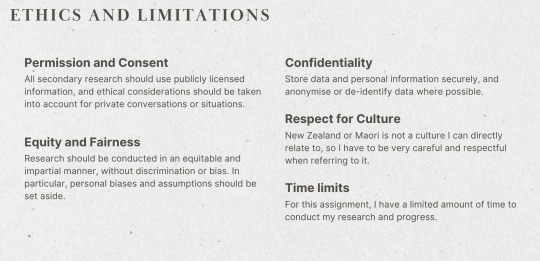
-> Captures of page 6 of presentation slides
Next Plan
Week 6 is for developing ideas and starting to finalise the final idea. I'll do more research based on the current ideas and find better ideas that I can add to my toolkit.
I'm aiming to start the report and finish the blog post by the beginning of week 6 for the Blog Update 1 submission.
Reference
Structure of Blog Reflection: The University of Edinburgh. (2020). Gibbs’ Reflective Cycle. The University of Edinburgh. https://www.ed.ac.uk/reflection/reflectors-toolkit/reflecting-on-experience/gibbs-reflective-cycle
(1) Nick Konings. (2023). Comment. Canvas. https://canvas.auckland.ac.nz/courses/86939/assignments/333761/submissions/303462#rubric
0 notes
Text
DES302 Blog Reflection
16th August (Wed)
On Monday, Design 302's Blog post assignments were marked! I was able to get a full mark and comments that can improve my blog post and reflection skills.

-> I got a full mark, fortunately!
And through this blog post, I will write down the direction of the blog in the future, reflect on my blog and what areas I should improve.
Look harder for challenges and weaknesses and consider how I can do things differently next time. -> Identify the challenge and weaknesses of methods, tools, and processes used every week, and reflect on them by writing down different directions assuming what if.
Look at the Reflector Handbook(1) to see where improvement can occur. -> I reflected on the 'Gibbs' Reflective Cycle(2)' that I used before. I thought my blog lacked 'feeling and thinking' and 'analyzing'.
More consideration of my feelings and thoughts about the challenges. -> I'm going to include more personal thoughts, and I'm going to add something that I personally found difficult about the challenge. Also, there is still inconvenience in writing down emotions, but I will make it easier to express my feelings by writing down blogs.
General reflection, the methodologies etc. -> I will do an overall reflection, especially the weekly tools, as well as an evaluation of the overall flow and the timeline and method used.
The font Size is too small. -> I increased the font size of the blog and expanded the overall screen width.
Helpful title posts that can help the user navigate to the posts. -> Therefore, in the future, I will write down what I have worked on in the title and add the date immediately below so users can know when this work has been done.
Referencing directly. -> I chose a method that can be easily read by adding numbers to the phrases and pictures with reference.
Caption my own images as well. -> I decided to put a caption in each image.
Reference
(1) The University of Edinburgh. (2021). Reflecting on experience. The University of Edinburgh. https://www.ed.ac.uk/reflection/reflectors-toolkit/reflecting-on-experience
(2) The University of Edinburgh. (2020). Gibbs' Reflective Cycle. The University of Edinburgh. https://www.ed.ac.uk/reflection/reflectors-toolkit/reflecting-on-experience/gibbs-reflective-cycle
0 notes
Text
13th August (Sun)
Description
Week4 was the last research phase before entering the direct ideation part. First of all, I considered research questions as the 'outsiders', not as a 'project designer' while working on the project.
Education Efficacy
Cultural Practices
In particular, I investigated who is the main target of the food safety education courses in New Zealand and what kind of education is being conducted. As a result of the research, education was generally conducted for people in the food industry, and most of them were digital or articles. In addition, most of New Zealand's current food safety education tools for 'teachers' in the school curriculum and the proportion of kits seen and learned indirectly through posters and videos rather than direct education toolkits.
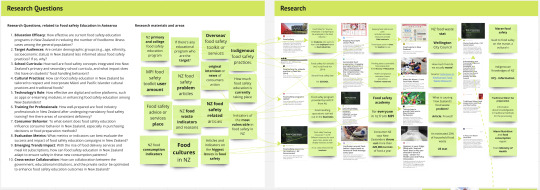
I analyzed the situation in depth using the toolkit based on the research. The name of the toolkit used is 'find issues, uncover needs', In the Collective action toolkit, a group of people write the different approaches to the problem and discuss it together. However, since I am working on a solo project, I investigated the problem by setting four personas and setting and writing down scenarios.
I created four scenarios in which four hypothetical people of different gender, ages, language, etc., could experience food safety difficulties or problems.
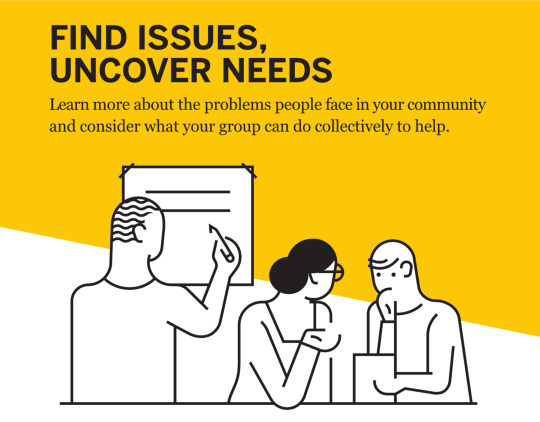
Finally, at the end of the week, I used the toolkit 'we saw, we head' to select the three most interesting pieces of information from the research and write down ideas on how to develop them.

Reflection
I've done various research, but I still think it's not enough to organize ideation. I will read more diverse articles and expand my research boundaries through direct experience. However, the current project progress requires initiating ideation, so I will accompany insufficient research as we begin constructing ideas.
Also, I think it is useful because I was able to get new information thanks to the use of the toolkit. However, since the collective action toolkit is the best toolkit for group projects, it was regrettable that the contents of the toolkit had to be modified for personal projects.
Evaluation
Project process 3/5 - I found that many students are currently in the ideation phase. I will recheck my timeline and plan a detailed schedule to complete within the time limitation.
Time management 2/5 - The extended break after the DES301 presentation led to a large amount of project processes over the weekend. From Week 5, I will make a detailed progress plan in advance on the previous weekend and proceed with the project through appropriate distribution.
Project result 5/5 - After Week 1 and 2, I already did research, but I got new information and various related information by using new tools.
Next Plan
Starting Ideation brainstorming and sketches for Week 5
Design 302 presentation preparation
Reference
David Sherwin. (2023). frog's Collective Action Toolkit. DAVID SHERWIN. https://www.davidsherwin.com/collective-action-toolkit
0 notes
Text
Blog no.6 03/08/23
It's been a moment since I've sat down and reflected, but much working and thinking has occurred in the interim. Currently, in Nga Marama Rakaunui, It's a time to be active and put planning into purposeful action. This aligns with my synthesising research, brainstorms and insights into actionable steps going forward. This past week and a half has been the Te Rapunga phase, where I'm diverging and exploring the infinite potential of DEI in the workplace. Because I'm nearing the end of this phase and will be entering the Te Kitenga phase next week, I have started converging a bit based on the tohu I have observed in the research and my own reactions to the research so far. Currently, I'm pretty set on focusing on the nuanced lived experience of Trans and Non Binary employees in the workplace.
We were assigned to scope a, b and c outcomes for our project, I discovered how process-motivated design could occur in the workplace. As well as setting out what an outcome could physically be, I also brainstormed how I would want the outcome to look, feel and sound. This aligns with my mindset focus on lived experience. The list is just my first iteration and will of course change as I speak to people and add their desires alongside mine.

After this I also wanted to investigate the assumptions I made in my projection of a workshop as the outcome of my design process.

This little drawing helps me identify questions that prototypes and testing can clarify.
0 notes
Text
Blog no.5 24/07/23
From my democratic workplace's "AH HA!" last post, I started to think about which DEI dimension I wanted to have as the lens I designed from and the group I community for. I'm very lucky to be surrounded by some passionate rainbow people in my stream (my own community as a non-binary, queer person), and they shared research they have found around queer experiences in the workplace and that reminded me how important my community is to me. From this insight, I decided to use a queer-feminist lens as my theoretical framework to inform my analysis of the state of the art and my subsequent prototypes. I collected research in three categories: designing for democracy (in the workplace), queer-feminist perspectives on the workplace and democracy and precedents that have in some way provided a solution to my current iteration of HMW: Empower Rainbow employees in decision making processes through democracy in the workplace?
Update: [25/07/23]
After reflection and some reading, democracy might be too ambitious a topic to design for especially as a single person. It would be an injustice to the values of democracy.
So that kind of leaves me at square one. A peer suggested I look back at what I've done before when I was showing them my portfolio, so this prompted me to think how I could use some previous project as a platform for this one. Later on, my partner reassured my anxieties about this project and not being able to design something that has as much fidelity or impact as I want. They reminded me about my previously developed approach, "Process-Motivated Design" which might be a better focus than the outcome since the limitations on collaborators and resources mean my outcome will fall short of my exceptions.
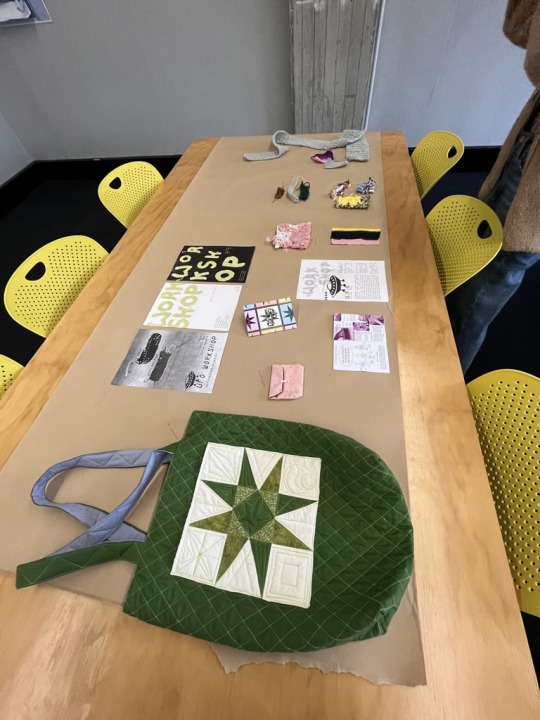
Above is a image of the exhibition I did for my Process-Motivated Design project.
I revisited what I wrote in Local Making about what I coined as Process-Motivated Design: "A way of designing that does not follow steps to a conclusion but uses designerly ways of thinking and doing to facilitate connection, agency, and widening perspectives" and "We did not role-play a potential user’s experience but actively created our own experience through the design process of experimenting, reflecting and developing ideas."
What if I could utilise this way of doing and translate it into an experience that Rainbow employees can benefit from and find agency in creating their own experience. Non-Rainbow employees can be involved, having co-experiences that allow understanding and empathy that hopefully leads to more inclusion, and equity.
And thus my updated HMW is:
HMW: Go beyond optical allyship initiatives and facilitate meaningful connections and empathy between rainbow and non-rainbow employees.
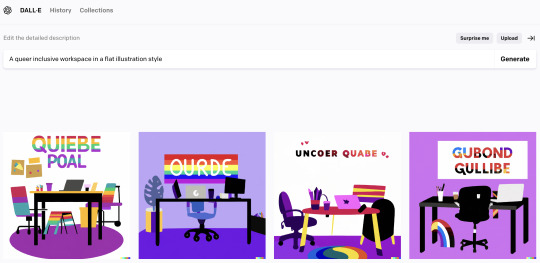
These images was created with the assistance of DALL·E 2
Above, an AI image of an 'inclusive workplace.'
0 notes
Text
Blog no.15 10/10/23
It's still a high-energy time ōmutu - mutuwhenua in the maramataka. For me, it's a high-anxiety time as well. I'm doing my best to focus and be productive, to use this energy (anxious energy included) to further my report and hopefully start my visual journal for 301. I realise also, I never sat down and reflected on the workshop I ran with Yasmin. So here that is (based on memory and notes I took in my Miro board):
Workshop reflection: using the 4 F's (The University of Edinburgh, 2018)

The workshop lasted just over an hour, with 3 participants, Yasmin and myself as facilitator/participants. We recruited our friends and peers as participants through in-person chats and discord posts. We then introduced interested people to our idea and objective through Facebook Messenger and created a poll to plan the date and time of the workshop. The workshop was run in an enclosed, familiar space in the design studios, using a round table as the primary setting for the crafting and conversations of the workshop. We provided yarn, crochet and knitting materials but also allowed participants to engage in their chosen craft activity. We started by letting everyone get into making before bringing out any kōrero cards. I asked how everyone was doing to gauge the energy and capacity for vulnerable conversation. One participant did have skills in working with yarn, so another participant taught them how to crochet. When we brought out conversation cards, there was some hesitation to speak about certain topics and periods of silence. Likely because of our existing relationships with the participants, some more vulnerable topics were discussed, and personal experiences were shared. The kōrero was both light and joking and more serious. The person who brought their own craft activity (drawing) was the only person who brought their outcome with them after the workshop; the others seemed to enjoy the process but didn't bring home the artefacts they created.

The feedback from the participants was that the atmosphere felt safe, and I agree I felt safe being vulnerable, experiencing periods of silence and listening to people's experiences. Back in Te Rapunga I brainstorm what a gut-feeling based ideal workshop would feel like:
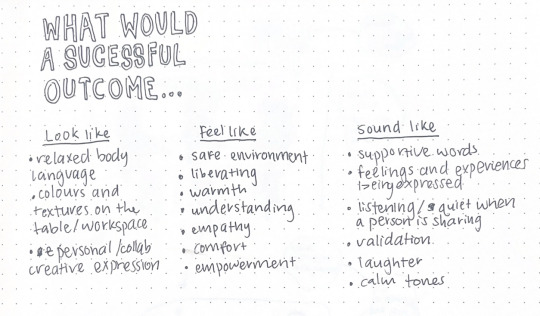
[Scan of notebook]
Many of those feelings were present in the workshop, both the audio/visual element captured in video footage we consensually took of the workshop, my subjective experience and my perceived experience of others.

Feedback on using prompt cards, from participants:

I wasn't sure how well the prompt cards worked; on the one hand, they did ignite conversation, but some were also not applicable to the participants/ they felt no connection to the questions/ prompts. As facilitators, Yasmin and I picked up on this and moved towards the questions that provoked interest and supplied our own experience as an ice-breaker for others. It is essential to consider whether facilitators are prompting conversation or if one of the employees leads the conversation toward gender experience and allyship. One insight I had from the workshop was that some topics were easier to talk about than others, and deciding the levels and topics is probably out of my ability to do well, thoughtfully and trauma-informed.

The workshop prototype went well. It was an excellent way to simulate my workshop idea and create an immersive experience that modelled the visual, auditory, visceral and tangible. Seating myself within the prototype is probably not good 'science' but for the creative process, I think, especially if bias carries a lower risk (eg, I am part of the community that I'm designing with), It's a great way to get a deeply emotional understanding of my idea that informs my design work in communicating the idea. I may not authentically test my prototype as my proposed participants aren't those I'm able to design with. But in terms of undergoing the creative process of fleshing out, refining and communicating an idea, it really helps to have the sensory and emotional inspiration from running a workshop. This reasoning, I acknowledge, sits design as more of a creative art than a problem-solving/ innovation machine, reflecting my own positionally and interest in design as process not outcome.
~Not really future plans but definitely things i'm learning about myself that can enhance my future projects.
[Video of workshop, shot by Yasmin, 2023]
References:
The four F’s of active reviewing. (2018, November 5). The University of Edinburgh. https://www.ed.ac.uk/reflection/reflectors-toolkit/reflecting-on-experience/four-f
0 notes
Text
Week 4 Blog
Previous phase;
I was at Whakarite (preparation) phase where I slowly started being more productive, reflecting on my proposal from DES300, doing further research, adding on scopes and creating a draft timeline (which is still a work in progress); essentially, putting together existing research onto Miro.
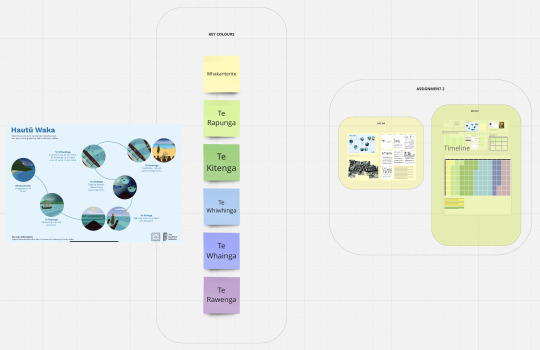
fig 1. Miro board
Current phase:
My mood has been downgrading as I lose confidence in my vision after seeing other people’s plans. Before submitting my slides, my laptop started to crash; hence my presentation slides were underdeveloped, so I feel like I didn’t present enough relevant information and graphics to my peers. I felt an immense sense of shame, so I neglected my research, feeling like being back to Te Rapunga (venturing the unknown) phase, where I was lost and felt underdeveloped in my research.

fig 2. DES301 presentation slides
Although I may have struggled with productivity, I can relate to the Hautū Waka framework, which looks into a level of certainty of where my capstone is going. I aim to go to Te Kitenga (sighting) slowly, a phase where I can develop further research to validate my plans.
Next phase;
Despite the lack of productivity and seeing what my peers have done, I plan on further expanding my scope, creating mood boards for each idea, and discussing with the stream leader whether that is executable.

fig 3. Plans and scope on Miro
If I am honest, I am leaning towards Plan B. Plan B looks into speculative and critical design, where I am designing an exhibition space to provoke controversy and discussion. Hence, I have questions that I would like to ask before considering my options regarding the following:
Consent from performers and the audience regarding being filmed
Whether its possible to book a space temporarily so simulate a mock exhibition.
Overall, it is slowly moving towards the next phase of the Hautū Waka.

fig 4. The lab team. (2022). Practice Foundations: Hautū Waka. The Auckland Co-design Lab.
0 notes
Text
9th August (Wed)
Description
Assignment 2 Presentation Reflection
On Tuesday, the presentation took place in the studio, with a five-minute presentation that summarised the work over the previous three weeks.

Reflection
Overall, the presentation was satisfactory. I made the most of the slides and scripts by planning how I would explain the current project status and vision, as well as my ideas and direction.
However, because I was unfamiliar with the presentation, I was reading a script. Midway through, I was able to interact with the audience. As a result, I will devote more time to preparing for and practising the presentation without a script in the final project presentation.
Evaluation
Project process 3/5 - Compared to other designers, I realized that the foundation of ideas is weak and my current process is not fast.
Time management 5/5 - Assignment 2 has been completed within the time limit, and I was proceeding to the registered place of the timeline.
Project result 4/5 - I'm satisfied with the presentation slides and scripts, and I think I've done my best.
Next Plan
This week is the beginning of the Te Rapunga(; initiation) phase, and I aim to start designing ideas after in-depth research and analyses.
Research - tool; Find issues, Uncover needs
Research - tool; Persona - We saw, We heard
Reference
0 notes
Text
Blog no.4 24/07/23
Kia ora! So today I didn't check the maramataka before class so will do that now... Tamatea-a-Ngana! - low energy, a time to be cautious and not make any decisions. Since I'm finishing off the whakariterite phase, which involves preparation and moving into te rapunga where I explore the infinite potential of my project (#diverging). How the Te rapunga phase is manifesting for me is ideating and expanding my knowledge of my identified areas of interest. In a continuation of last week's post, I did a mind map trying to situate myself within a larger context for which I can design.
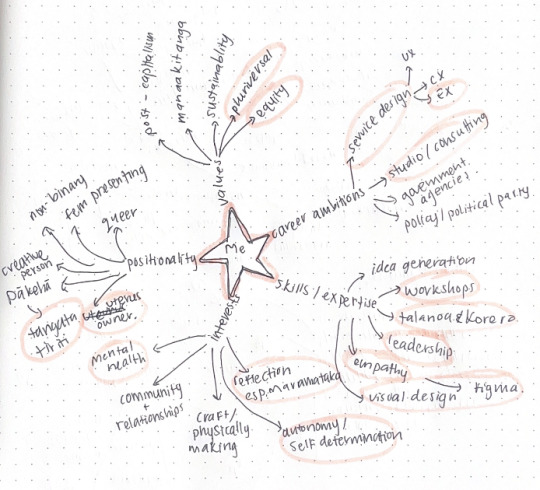
I put myself in the middle, which could be ego-centric, but in the context of this project, I'm working alone, so I have to have myself as a starting point. I mapped out 5 dimensions I deemed relevant to the project. My values are important because 1. It is essential to be clear about what motivates my work and decision-making, and 2. Designing in alignment with personal or team values secures integrity. My career ambitions will similarly shape my approach as I am motivated by creating an output I can put on my portfolio. Awareness of my skills and expertise also allows me to acknowledge what I can be confident in and what areas I may have to find people to help me. My interests and positionally intersect, forming who I am as a person and, by extension, who I am as a designer, and when selecting paths to go down, I will keep to what I'm passionate about to achieve the best outcomes and maintain intrinsic motivation. I circled the areas that I thought would align well with my initial HMW (empower graduate designers to design for equity in profit-driven businesses).
Parallel to my personal map I also looked at areas in the Inclusivity Matrix and the Employee lifecycle I could focus on.

Above I identified the areas I wanted to focus on. I discussed this with my mum, listening to her perspective as someone who has worked in a corporate environment all her adult life. She mostly interrogated my assumptions as well as the feasibility of my ideas. Initially I wanted to explore designing the work week and empowering especially people with uteruses to work with their cycle and improve their performance. I realised this wouldn't be possible in many sectors and the only reason I am able to do this during my project is because I have full agency over the timeline beyond end due dates and no real management to report to. Another thought was how can we change what is 'good work' and therefore what gets rewarded. A huge pain point for me was the pay gap not only between dominant and marginalised identities but between workers and employers under capitalism. I started to think outside the traditional scope of DEI and more about systems change, particularly in the tension between equity in business and the systems of exploitation under capitalism which contribute towards inequity.
This led me a surf of the web to find how this could look. I somehow came across democratic workplaces and I had an AH HAH! moment. Democracy and governance is a personal interest of mine and I'm interested in ways to flatten the hierarchies of decision-making to empower employees, traditionally marginalised and under represented in leadership.
0 notes
Text
Blog no.3 20/07/23
Today we had a talk from Diversity Works, our partner for the business DEI stream. They gave us the resources of the Aotearoa Inclusivity Matrix and the Employee Lifecycle (below). Nata and Sarah, the two speakers, mentioned the importance of having a specific area we want to place our design intervention. I also have to choose the specific lens of DEI to focus on since currently I haven't gone more specific than just 'graduate designers.'
I liked the idea of using an ideal future scenario co-designed in the Te Rapunga, infinite potential stage, to start with and backcast and find what shifts need to happen to achieve that future. I'm starting to question whether the Hautū Waka is the most appropriate framework for my project. I have only ever used the Hautū Waka in group contexts, I will reach out to Ayla and discuss.
[update 21/07/23] After reflecting and speaking to some other design students in a DSA social event, I discovered the opportunities i'm missing by not working directly in the space that our industry partner is. My initial approach, outlined in my research proposal, was influenced by the personal frustration I feel in 'selling out' in graduate design roles. While this is still a valid feeling, I think I'm limiting myself in trying to solve my own problem, a better, possibly more worthy challenge would be more inline with Diversity Work's work. A pivot to a more prevalent issue could make my solution more feasible and impactful. One point of inspiration is how I'm structuring my own project, tailored to my own energy cycles, as well as those of the marama. My next step is doing a bit of a brainstorm to explore what i'm interested in, what area I could practically test with fellow students, and what aligns with my vision of the type of designer I want to be. See next post for updates on this!
0 notes